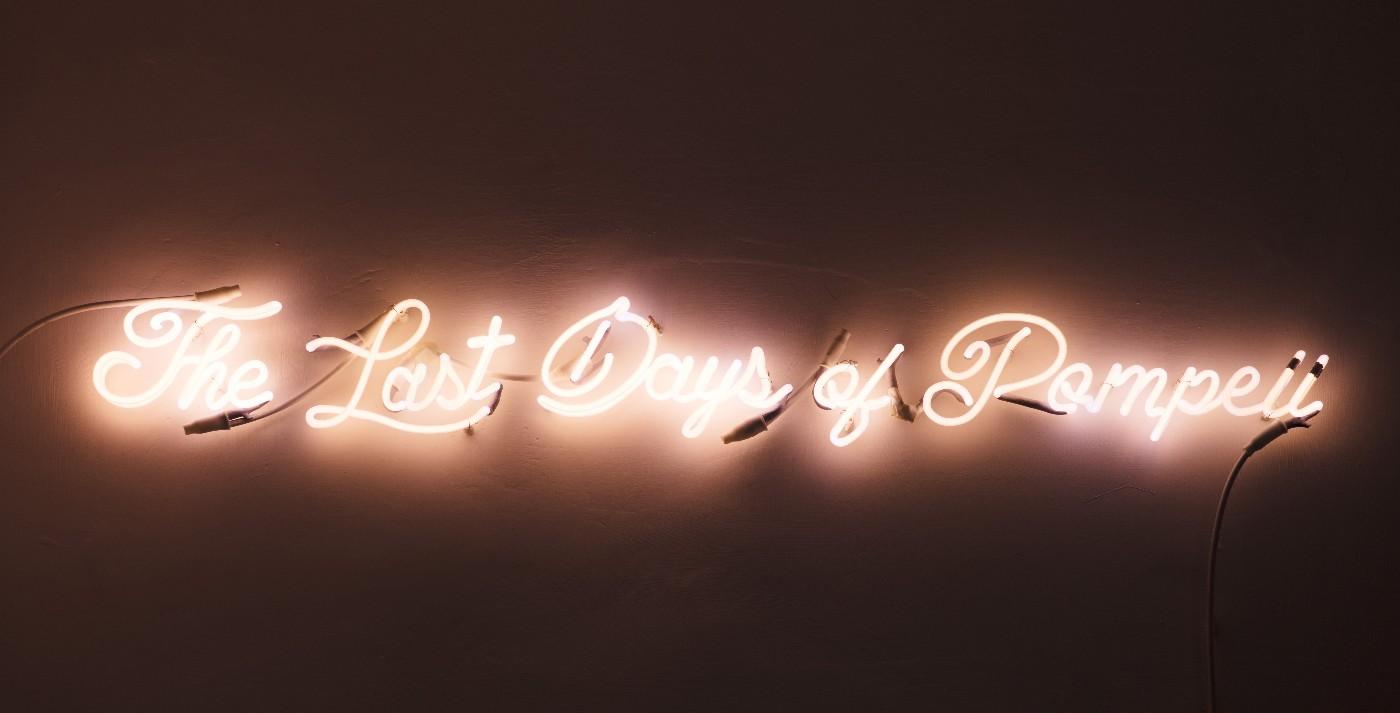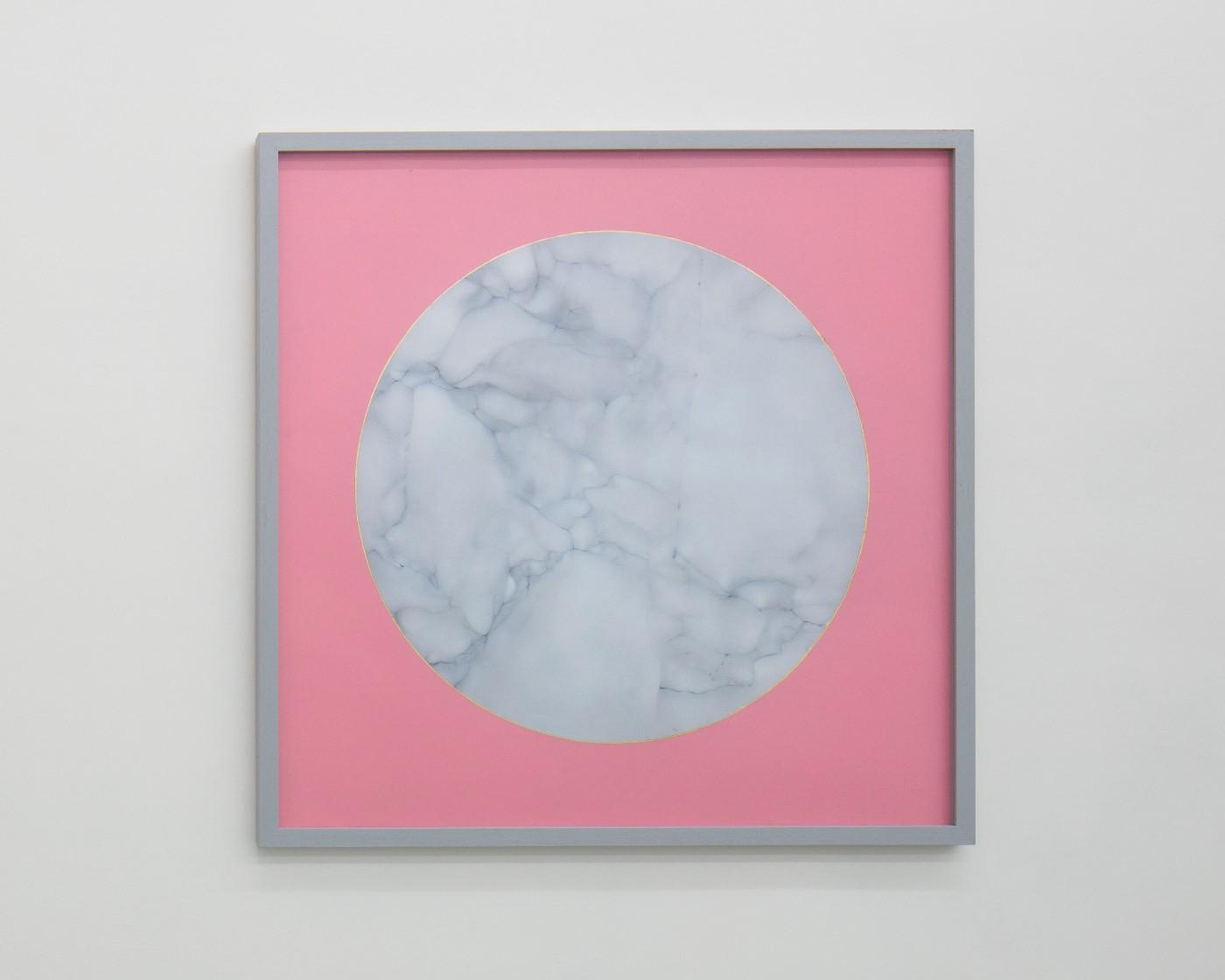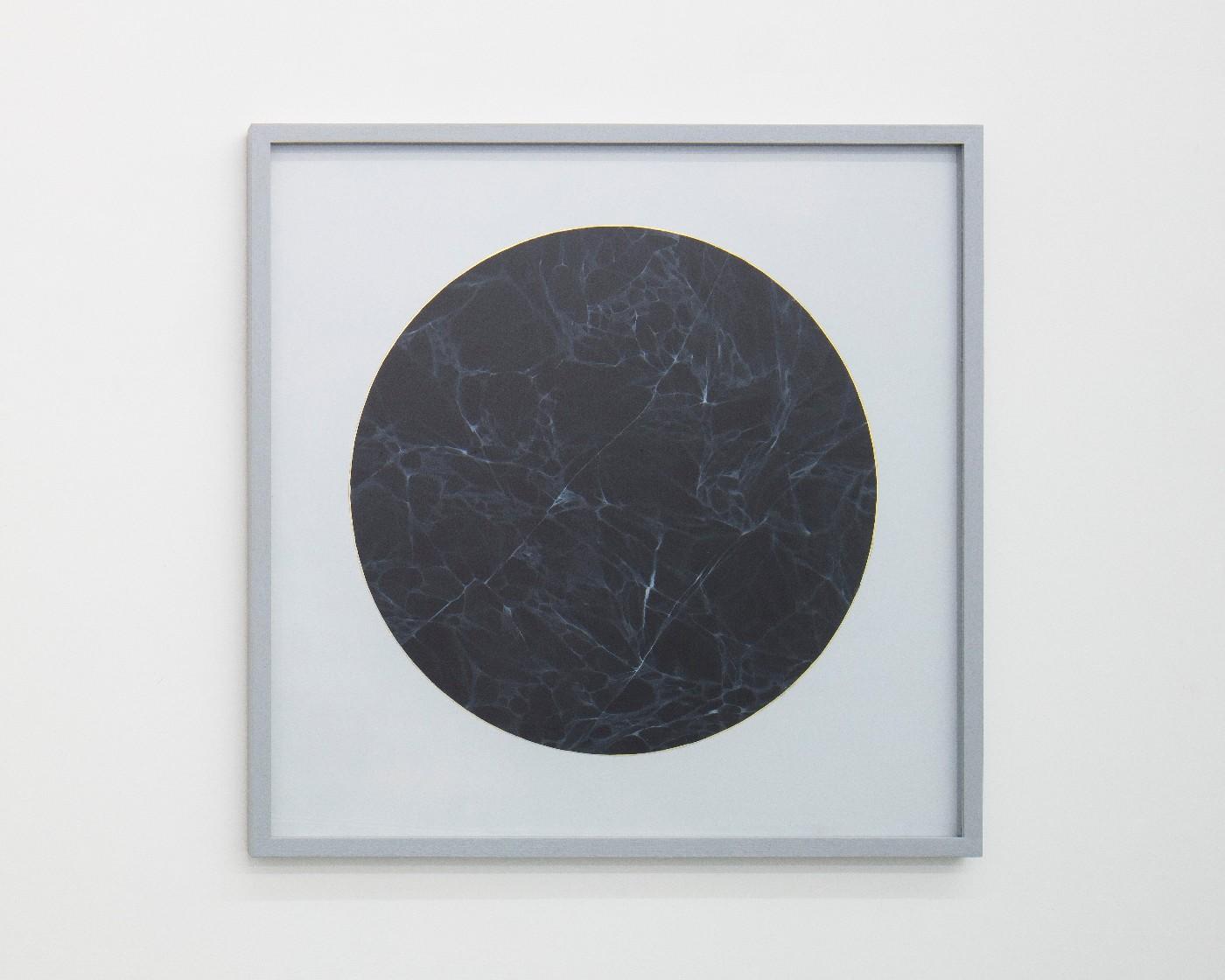The exhibition includes six recent works on paper in acrylic paint and pencil, featuring a series of recurring circles, representing full moons. Some of these serene moon shapes, skillfully crafted to look like variously colored marble, are finished with gold leaf, calling to mind Greek and Roman architecture. These marble moons stand for permanence and rebirth, balancing the catastrophe of Pompeii with an ephemeral optimism.

Delia Gonzalez, The Last Days of Pompeii, 2017, Neon, 47 in. x 8 in.
Now at the MIT List Visual Arts Center, The Last Days of Pompeii, an installation by multidisciplinary artist Delia Gonzalez, creates a multimedia environment, using intricate drawings, neon sculpture, architecture and music. Gonzalez's multi-layered work is informed by many sources, including history, surrealism, mythology, and mystical traditions. The Last Days of Pompeii uses the dramatic destruction of that ancient Roman city to allude to cycles of destruction and renewal, and current issues of ecological, economic, or political disaster.
Gonzalez’s title piece, a neon sculpture spelling out The Last Days of Pompeii, is reminiscent of a film marquee or a nightclub sign. Casting a pink glow across the gallery, it transforms the space into a performance venue. Her pulsing electronic track Vesuvius (2017) adds to the ambiance.

Delia Gonzalez, Don't Exclude the Moon, 2017, graphite, acrylic paint, gold leaf on paper

Delia Gonzalez, The Hour of Departure, 2017, graphite, acrylic paint, gold leaf on paper
Miami-born Gonzalez lives and works in Athens and New York and exhibits internationally. Exhibitions in collaboration with Gavin Russom include P.S.1 Contemporary Art Center, New York and SculptureCenter, New York. Gonzalez released her most recent album Horse Follows Darkness on DFA Records in 2017.
The Last Days of Pompeii is on view through September 30. On September 4th, Gonzalez and Bryce Hackford will perform mesmerizing ambient electronica, including music from her recent album.

Delia Gonzalez, The N° Five, 2017, graphite, acrylic paint, gold leaf on paper
























